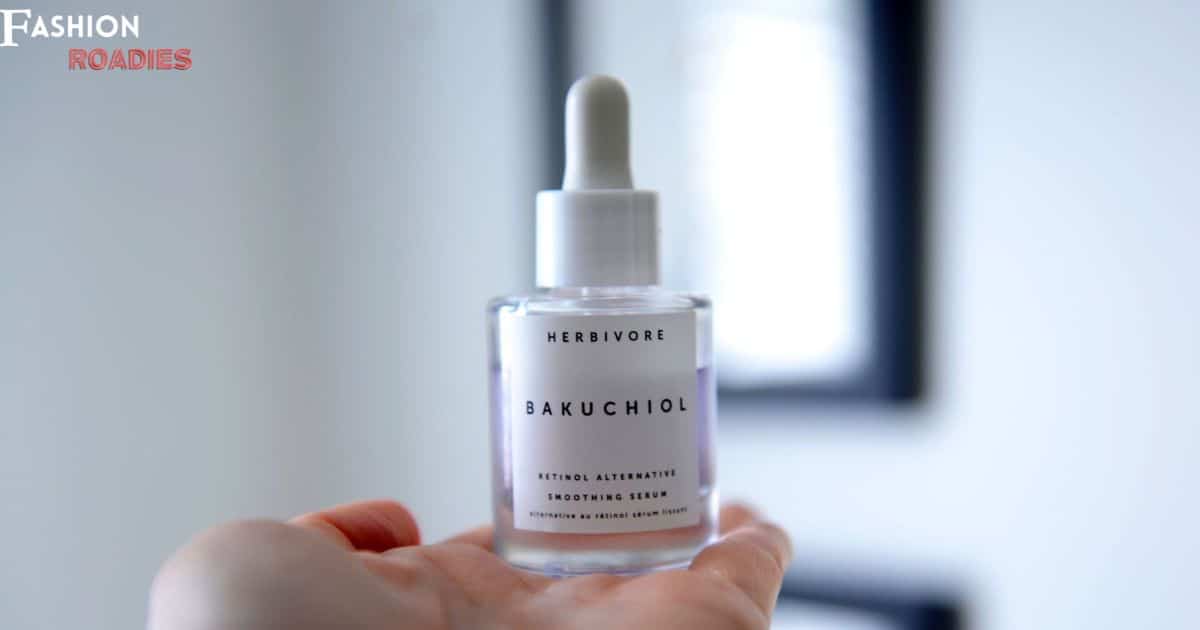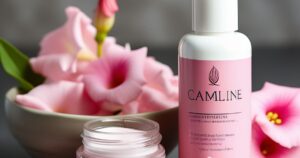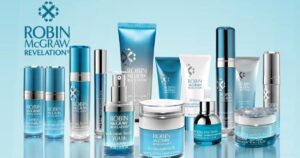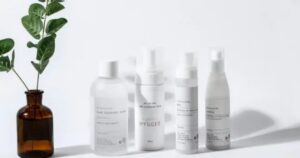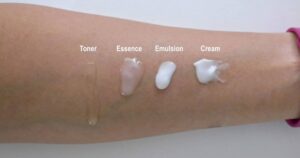In the realm of skincare, one ingredient stands out as a symbol of youthfulness and rejuvenation: retinol. Renowned for its remarkable benefits, retinol has become a staple in many people’s beauty routines. But incorporating this potent ingredient into your skincare regimen requires knowledge and precision. In this article, we will guide you through the process of including retinol in your skincare routine, offering expert advice and tips to help you achieve the desired results and belong to a community of glowing, confident individuals.
Key Takeaways
- Consider your skin type compatibility when choosing a retinol product.
- Perform a patch test and gradually introduce retinol into your routine.
- Incorporate retinol into your evening skincare routine and moisturize thoroughly.
- Pair retinol with complementary skincare ingredients and adjust usage for sensitive skin.
Understanding the Benefits of Retinol
One must understand the benefits of retinol in order to incorporate it effectively into their skincare routine. Retinol, a derivative of vitamin A, has gained immense popularity in the beauty industry for its numerous benefits for the skin. One of the key benefits of retinol is its effectiveness in reducing the appearance of fine lines and wrinkles. It stimulates collagen production and enhances cell turnover, resulting in smoother and more youthful-looking skin. Additionally, retinol helps to improve skin texture and tone, reduce hyperpigmentation and dark spots, and unclog pores, making it an excellent ingredient for combating acne and blemishes. Furthermore, retinol has antioxidant properties that protect the skin from free radicals and environmental damage. Understanding these benefits is crucial for incorporating retinol effectively into a skincare routine, ensuring optimal results and a healthier complexion.
Determining the Right Retinol Product for Your Skin
When determining the right retinol product for your skin, it is important to consider your skin type compatibility, the strength of the product, and its concentration. Different skin types may react differently to retinol, so it is important to choose a product that is suitable for your specific needs. Additionally, the strength and concentration of the retinol should be taken into account to ensure optimal results without causing irritation or sensitivity.
Skin Type Compatibility
Determining the right retinol product for your skin involves considering its compatibility with your specific skin type. While retinol can be beneficial for most skin types, it is important to understand how it may interact with your individual needs. Here are three factors to consider when determining the compatibility of retinol with your skin type:
- Sensitivity: Retinol can cause skin reactions, such as redness, dryness, or flaking. If you have sensitive skin, it is important to choose a retinol product with a lower concentration and gradually introduce it into your skincare routine.
- Oiliness: Retinol can help reduce excess oil production and unclog pores. If you have oily or acne-prone skin, a retinol product with a gel or serum texture may be more suitable for your skin type.
- Aging concerns: Retinol is known for its anti-aging benefits, such as reducing fine lines and wrinkles. If your primary concern is aging, a retinol product with a higher concentration may be more effective for your skin type.
Strength and Concentration
Retinol products with a higher concentration can provide both strength and efficacy, making them suitable for addressing aging concerns. These products contain a higher percentage of retinol, which is a derivative of vitamin A known for its anti-aging properties. Higher concentrations of retinol can penetrate the skin more effectively, stimulating collagen production and reducing the appearance of fine lines and wrinkles. However, it’s important to note that higher concentrations of retinol can also increase the potential for side effects such as dryness, redness, and irritation. To minimize the risk of adverse reactions, it is recommended to perform a patch test and gradually introduce retinol into your skincare routine. This allows your skin to acclimate to the product and helps to ensure that it is well-tolerated.
Patch Testing and Gradual Introduction of Retinol
A cautious approach is essential when incorporating retinol into a skincare routine, necessitating patch testing and a gradual introduction to mitigate any potential adverse reactions. Retinol, a derivative of vitamin A, is a powerful ingredient known for its anti-aging and skin-renewing properties. However, it can also cause irritation, dryness, and redness if not used properly. To safely introduce retinol into your skincare routine, follow these steps:
- Patch Testing: Apply a small amount of retinol to a small area of your skin and observe for any signs of irritation or allergic reactions.
- Start with a Low Concentration: Begin with a low concentration of retinol, such as 0.1% or lower, to allow your skin to acclimate to the ingredient gradually.
- Increase Frequency and Concentration: After a few weeks of successful use, gradually increase the frequency and concentration of retinol in your routine, monitoring your skin’s response closely.
Incorporating Retinol Into Your Evening Skin Care Routine
Incorporating retinol into your evening skin care routine can have significant benefits for your skin. When using retinol, it is important to start with a low concentration and gradually increase the frequency of application to allow your skin to adjust. Additionally, pairing retinol with complementary skincare products, such as moisturizers and sunscreen, can help minimize potential side effects and enhance its effectiveness.
Retinol Application Frequency
Consistently applying retinol to your skin at the appropriate frequency is crucial for maximizing its benefits and minimizing potential irritation. Here are some retinol application tips to help you incorporate this powerful ingredient into your skincare routine effectively:
- Start slow: Begin by using retinol once or twice a week to allow your skin to adjust. Gradually increase the frequency as your skin becomes more tolerant.
- Use at night: Retinol can make your skin more sensitive to sunlight, so it’s best to apply it in the evening as part of your nighttime skincare routine.
- Moisturize and protect: Retinol can cause dryness and flakiness. Ensure to moisturize your skin thoroughly after applying retinol and always wear sunscreen during the day to protect your skin from potential side effects and sun damage.
Complementary Skincare Products
To fully optimize the benefits of retinol, it is important to judiciously select and thoughtfully integrate complementary skincare products into your evening routine. Retinol, a derivative of vitamin A, is known for its anti-aging properties and ability to improve skin texture and tone. However, it can also cause potential side effects such as dryness, redness, and sensitivity. By incorporating complementary skincare products, you can minimize these side effects while maximizing the benefits of retinol. Here is a table showcasing some examples of complementary skincare products that work well with retinol:
| Skincare Product | Purpose |
|---|---|
| Hyaluronic Acid | Hydrates and plumps the skin |
| Niacinamide | Helps reduce redness and inflammation |
| Vitamin C | Brightens and evens out skin tone |
| Ceramides | Strengthens the skin barrier |
| Antioxidants | Protects against free radicals and environmental damage |
Pairing Retinol With Other Skin Care Ingredients
One important consideration when using retinol is ensuring that it is effectively paired with other skin care ingredients to maximize its benefits. Retinol, a derivative of Vitamin A, is known for its anti-aging properties and ability to reduce the appearance of wrinkles, fine lines, and hyperpigmentation. To enhance the effectiveness of retinol and minimize potential side effects, it is essential to incorporate the following complementary ingredients into your skincare routine:
- Hyaluronic Acid: This hydrating ingredient helps to retain moisture in the skin, preventing dryness and irritation commonly associated with retinol use.
- Niacinamide: Known for its soothing and anti-inflammatory properties, niacinamide can help calm any potential redness or sensitivity caused by retinol.
- Peptides: These amino acid compounds promote collagen production and help to improve the overall texture and firmness of the skin, further maximizing the results of retinol.
Adjusting Retinol Usage for Sensitive Skin
Sensitive skin individuals must carefully modify their retinol usage to prevent any potential adverse reactions and maintain the health and integrity of their skin. While retinol is a highly effective ingredient for improving skin texture, reducing wrinkles, and promoting cell turnover, it can also cause irritation and dryness in those with sensitive skin. To avoid these issues, there are a few precautions that can be taken. Firstly, it is recommended to start with a lower concentration of retinol and gradually increase it over time. Additionally, using retinol every other day or a few times a week can help minimize any potential irritation. For those with extremely sensitive skin, alternative options for retinol, such as bakuchiol or rosehip oil, can be considered. By following these precautions, individuals with sensitive skin can still enjoy the benefits of retinol without compromising the health of their skin.
Transition into the subsequent section about ‘maximizing the results: tips for consistent retinol use’:
In addition to taking precautions for sensitive skin, there are also ways to maximize the results of retinol for all skin types.
Maximizing the Results: Tips for Consistent Retinol Use
Consistency in applying retinol is key to maximizing its results and achieving the desired improvements in one’s skin texture and appearance. To make the most out of your long-term retinol use, it is important to avoid common mistakes and follow these tips:
- Start slow: Begin by using retinol once or twice a week and gradually increase the frequency as your skin tolerates it. This helps minimize potential irritation and allows your skin to adjust.
- Protect your skin: Retinol can make your skin more sensitive to the sun, so it is crucial to wear sunscreen daily with a high SPF to prevent sun damage and maintain the effectiveness of retinol.
- Moisturize adequately: Retinol can cause dryness and flaking, so it is important to moisturize your skin regularly to keep it hydrated and balanced.
Frequently Asked Questions
Can Retinol Be Used in the Morning as Part of a Daytime Skincare Routine?
Retinol can be used in the morning as part of a daytime skincare routine. The benefits of using retinol in the morning include its ability to improve skin texture, reduce wrinkles, and protect against environmental damage.
Are There Any Specific Ingredients That Should Be Avoided When Using Retinol?
When incorporating retinol into a skincare routine, it is important to be aware of specific ingredients to avoid. Certain ingredients, such as benzoyl peroxide and alpha hydroxy acids, can potentially cause side effects on sensitive skin.
Can Retinol Be Used on All Skin Types, Including Oily or Acne-Prone Skin?
Retinol is generally suitable for all skin types, including oily or acne-prone skin. However, individuals with sensitive skin should exercise caution and choose a lower strength retinol. Consulting a dermatologist can help determine the appropriate retinol strength for individual needs.
How Long Does It Typically Take to See Results From Using Retinol?
Results from using retinol can typically be seen within 4-12 weeks, depending on individual factors such as skin type, condition, and the concentration of retinol used. Consistency and patience are key in achieving the desired effects.
Is It Necessary to Use a Moisturizer When Using Retinol?
Using a moisturizer with retinol is beneficial in a skincare routine. It helps to counteract potential dryness and irritation caused by retinol. To incorporate both, apply retinol at night and follow with a moisturizer to lock in hydration.
Conclusion
Incorporating retinol into your skincare routine can offer numerous benefits, such as reducing the appearance of wrinkles and improving skin texture. By understanding the benefits of retinol, choosing the right product for your skin type, patch testing, and gradually introducing it into your evening skincare routine, you can maximize its effectiveness. Pairing retinol with other skincare ingredients and adjusting its usage for sensitive skin can further enhance its benefits. Consistent use of retinol, with proper precautions, can lead to healthier, more youthful-looking skin. How can you start incorporating retinol into your skincare routine today?


